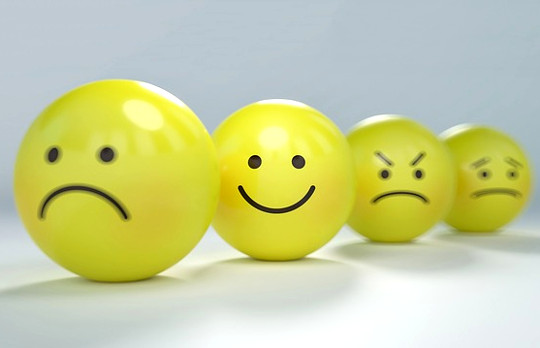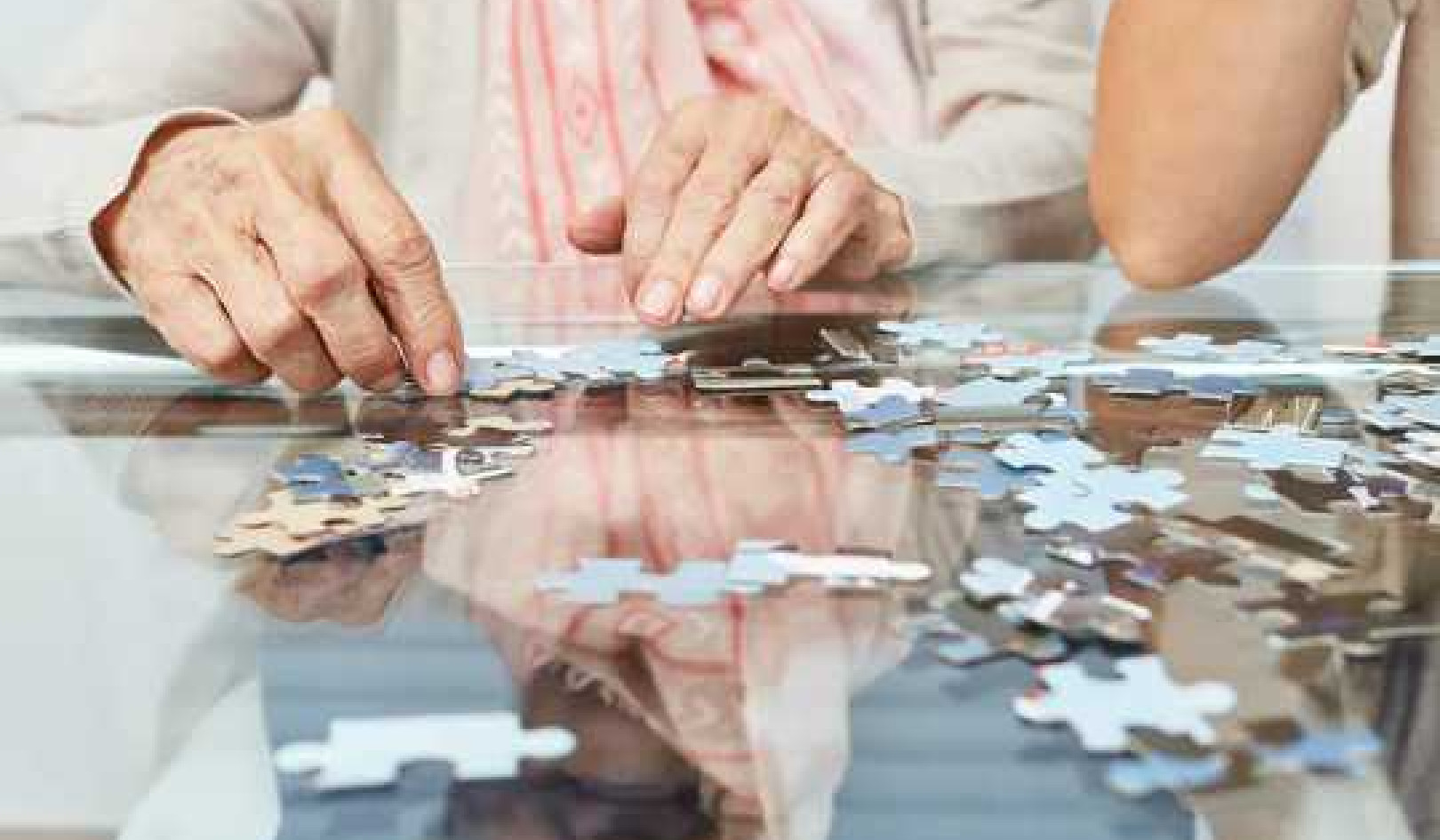
There is a certain cosmic joke to the fact that we begin our spiritual journey often wishing to uncover a “true” self—some sort of finally decided, static being. The deep irony is that when we move past our individual wounding, we discover that we are not just one thing: we are a multitude of selves.
We are much more multi-faceted than we give ourselves credit for. Even if we are an introvert, we have an extrovert within us. Even if we are peaceful, we have violent aspects. We can love aerobic exercise as well as being lazy and watching television. In earlier stages we see such aspects of self as being at war with one another. If we are a soft person who is attempting to be compassionate, we deny the parts of ourselves that are greedy, grasping, or bloodthirsty.
I See You!
One of the harshest aspects of this phase is that identities that are submerged at our very depths come forward. It is not pleasant to consider the parts of ourselves that seek to cause harm. It is also not pleasant to be faced with what is still unhealed within us.
However, it is not by denying such things but by truly accepting them that we can understand our complexity. In previous stages this would have created chaos and drama, as these aspects of ourselves are constructed through societal filters that ascribe certain notions of goodness and ethics, and we do not like to think of ourselves outside of such parameters.
Most significantly, we were unable to consider ourselves as anything other than the eternal victim in our own lives. This is the wounded ego, the part of us that is struggling under the weight of being harmed and brutalized, not heard or nurtured. We would project outward anything that we did not wish to heal internally, becoming fascinated by movies about serial killers, fixating in fear on the latest terrorist, decrying others for being filled with hate or for being fake. All the while not recognizing that truly awakening means accepting these aspects within ourselves.
I Accept You!
These parts of ourselves are not to be transmuted into societal or personal understandings of “goodness.” We must accept even the most vicious, bloodthirsty, apathetic, amoral, and despised aspects of ourselves for what they are, without attempting to change them. That way they can move from being subconscious forces that direct our lives, into a part of our flowing and present consciousness. There is deep power in these aspects of ourselves, and working with these aspects of self through acceptance reveals them to be a source of significant spiritual energy.
Notions of goodness are religious and societal constructs. Compassion does not mean weakness. There can be fierce compassion, warriorship compassion, stoic compassion, angry compassion. It is essential that people who have perspective beyond personal wounding speak out against what is unjust, illusory, and based on imbalanced power in this world.
It is impossible to be singularly good, nor should we be. While we all try our best, we are imperfect creatures and we can create harm. We require a certain amount of selfishness while we are in the human form. We must attend to ourselves, as well as our families and loved ones, first. We can never truly be “selfless” as we must attend to our basic safety, our basic needs, and those of our loved ones.
It is by understanding this that we can accept the aspect of ourselves that must be selfish, that can create harm, that is imperfect, and realize that we simply do the best that we can. If we do harm another, we make amends internally or externally. It is by deeply grounding into our humanity that we can move beyond illusions of a perfected state, and into the type of love for self and others that comes from acceptance of what is.
I Feel You!
It is by accepting all aspects of ourselves that we can truly and deeply feel. Many of us are not truly living, but merely surviving. It is by feeling on the deepest levels, accepting what arises, that we awaken. It is by moving beyond the sphere of self that we can begin to witness the pain of others, and the world.
When the size of your bubble increases and you are able to notice more than your own emotional projections, you feel the pain of the world. Exploring what is unhealed within you is always helpful, but in this phase we begin to realize that the world, the people in it, and other beings and intelligences are alive and in pain.
There is a collective level of pain in the world that comes from humanity, a wail that comes from the oceanic depths of all those who have suffered. There is a palpable energy of when something traumatic is going to happen on a global scale.
Feeling such things is incredibly difficult. The level of confusion and pain in the world that has nothing to do with us or our personal psychology or wounding is a hard thing to handle for even those with tremendous skill. What is needed for liberation is the ability to feel, to relate, to be in communion, rather than denying, repressing, or controlling the senses or emotions. Witnessing the suffering of another and deeply feeling it within ourselves, allowing ourselves that grief, can free the emotions to flow.
Liberation is achieved through acceptance. It is only then that we can realize the skilled usage and inherent power of the emotions. By accepting our emotions, and by authentically experiencing them, we can be liberated through them.
I'm With You!
Perhaps the single identifying feature of this phase is our awakening to social, religious, and cultural constructs. We are more than just the sum of our wounds, or the wounds that have been passed down to us. It is only by awakening to our personal history, and traversing the first phase of kundalini awakening, that we can understand this.
Prior to this stage, we may feel as if we singularly create the world, or can singularly create our reality. We certainly create a lot of drama for ourselves, and restrict what is possible for ourselves through the beliefs that have emerged from our wounding. But there are societal, cultural, and social constructs in place that very much regulate who we are, and that create imbalances of power in this world. It is only by awakening to these that we can move into realizing that we create this world together.
These constructs form a large part of who we are. Our history, culture, race, gender, and society create specific patterns of relating and being that we are enmeshed with. We can extricate ourselves from such constructs and realize who we are, separate from them. By moving into a witness state with them, we no longer have to blindly carry them out.
Looking towards the parts of us that hate can be incredibly revealing. There is an incredible amount of nuance to this, because at a certain level we are all one. But in this level of reality we are not all the same.
By appreciating our differences and seeing the beauty in them, we can move beyond hate and separation both inwardly and outwardly. This may include the realization of how ideologies have been created out of wounding and illusion, and how suffering is perpetuated. But we can still work internally with our reactiveness.
I Nurture You!
During this phase of kundalini awakening our authenticity rises, along with our clarity and focus on purpose. We gain a clear mind and a sense of peace, as well as the ability to look at the world to see what is unhealed. We have the first realization of the cosmic “I”; through this perspective shift we realize what we uniquely bring to the world. It is by authentically bringing our unique capacities to the world that we can truly understand why we are here and what we are here to do.
In this stage there is a significant switch in core energetics. We move from taking energy in attempts to nurture the system (all energy going in, with very little going out) to bringing what we have realized into the world. We realize that, paradoxically, offering energy and being of service creates more flow through the system and fosters personal evolution.
The spiritual path is now traversed for the benefit of the world, and the people in it. This is a distinct shift, and it is through this shift that we come into states of devotion and bliss.
Questions for Self-Enquiry
What parts of me are not authentic?
By questioning what aspects are still wearing a mask, or that do not wish to reveal themselves to the world, we can see what lies unresolved within. Authenticity means embodiment and the release of the false masks we wear. Whereas we can consciously reach for such masks, as one would do to play a role in a film, prior to this point masks show a lack of authenticity and a skewed version of reality. By questioning the aspects of ourselves that are hiding, that do not wish to embody or reveal themselves, or that are pretending enlightenment or superiority, we can see what still feels separated within.
Am I getting lost in phenomena?
It is quite easy in this stage to experience things that the average human being would consider either insane or magnificent, and to hang on to such constructs. We may wish to mentally figure them out, to break them down into something that can be known, and thus controlled.
By asking this question, we realize the fleeting insignificance of much of what comes to pass. We can watch our mind attempt to reduce the ineffable to something that can be controlled, or to relate to it through symbol, myth, or psychological construct.
Most of the higher consciousness states are states of deep feeling, light, or flow. Letting such experiences be what they are, not grasping them, allows us to bring our focus back to what lies unhealed or unprocessed within. We can also understand that our true nature is to permanently abide in them.
Am I fueling self-obsession?
It is easy to use well-meaning constructs, such as “love is all there is,” to fuel self-obsession. Such realizations are indeed profound. But they are rarely nuanced enough to meet everyday reality, and we may get lost in flowery or idealized language that does not allow us to meet the world.
What type of love? Is this the soft love that society says is worthwhile, the motherly or fatherly touch the wounded soul craves? There is no way to argue against love, and the experience of deep divine love is a beautiful experience, but such sentiments can perpetuate abuses of power or isolation in a bubble.
You do not need to feel love for someone who has abused you, for someone who is willfully ignorant, who is looking to take as much from the world as they can, or who is seeking to do harm to those they come into contact with. You can understand them, you can see them, you can even love them, but in differentiated reality, that means boundaries.
We need to accept and integrate all of our emotions, not just what we call love. One very damaging belief is that we are not “good enough” or “spiritual enough” if we experience any emotion other than love.
Spiritual paths must be nuanced, because such concepts lack depth. What does “love” even mean? How do we enact it in the world? Yes, we can feel love for all that is. We can understand people at rather deep levels.This does not excuse their behavior, even if we can see exactly how they came to be who they are and feel compassion for them.
I Hear You!
The victimized aspects of ourselves need to be heard in their pain, their anger, their grief and their fear. They need to realize that those sentiments are not only acceptable but necessary, and feel them deeply—not to be offered a puppy and platitudes about love.
There are stories of cults where concepts such as “divine love” are used to perpetuate sexual abuse or take the power of women and men who are looking for pure sentiments in an impure world.
Moving beyond the knot of the first stage means a shift in the spiritual path: we use the spiritual path to be of benefit to others. This is done by looking within, but even self-reflection can lead to romanticization of spiritual concepts and self-obsession. If this is happening, doing something to be of direct physical benefit to the world, such as volunteering, is indicated.
Subtitles by InnerSelf
©2019 by Mary Mueller Shutan. All Rights Reserved.
Publisher: Findhorn Press, an imprint of Inner Traditions Intl.
www.findhornpress.com and www.innertraditions.com
Article Source
Working with Kundalini: An Experiential Guide to the Process of Awakening
by Mary Mueller Shutan
 Kundalini awakenings can have profound physical, emotional, and mental effects, making it difficult to cope with everyday life, yet these powerful awakenings can also allow you to release past trauma, see past the illusions of the false self, and awaken your spiritual heart, enabling you to recognize the divine self. Providing detailed guidance for each phase of Kundalini awakening, this experiential guide supports you as you transform not only emotionally and spiritually but also physically and socially into your divine self.
Kundalini awakenings can have profound physical, emotional, and mental effects, making it difficult to cope with everyday life, yet these powerful awakenings can also allow you to release past trauma, see past the illusions of the false self, and awaken your spiritual heart, enabling you to recognize the divine self. Providing detailed guidance for each phase of Kundalini awakening, this experiential guide supports you as you transform not only emotionally and spiritually but also physically and socially into your divine self.
Click here for more info and/or to order this book or to purchase the Kindle edition or Audiobook.
About the Author
 Mary Mueller Shutan is a spiritual healer and teacher with an extensive background in Chinese Medicine, CranioSacral therapy, Zero Balancing, and energy work. She is the author of The Spiritual Awakening Guide, The Complete Cord Course, The Body Deva, and Managing Psychic Abilities. Visit her website at www.maryshutan.com
Mary Mueller Shutan is a spiritual healer and teacher with an extensive background in Chinese Medicine, CranioSacral therapy, Zero Balancing, and energy work. She is the author of The Spiritual Awakening Guide, The Complete Cord Course, The Body Deva, and Managing Psychic Abilities. Visit her website at www.maryshutan.com
Books by this Author
at InnerSelf Market and Amazon


























